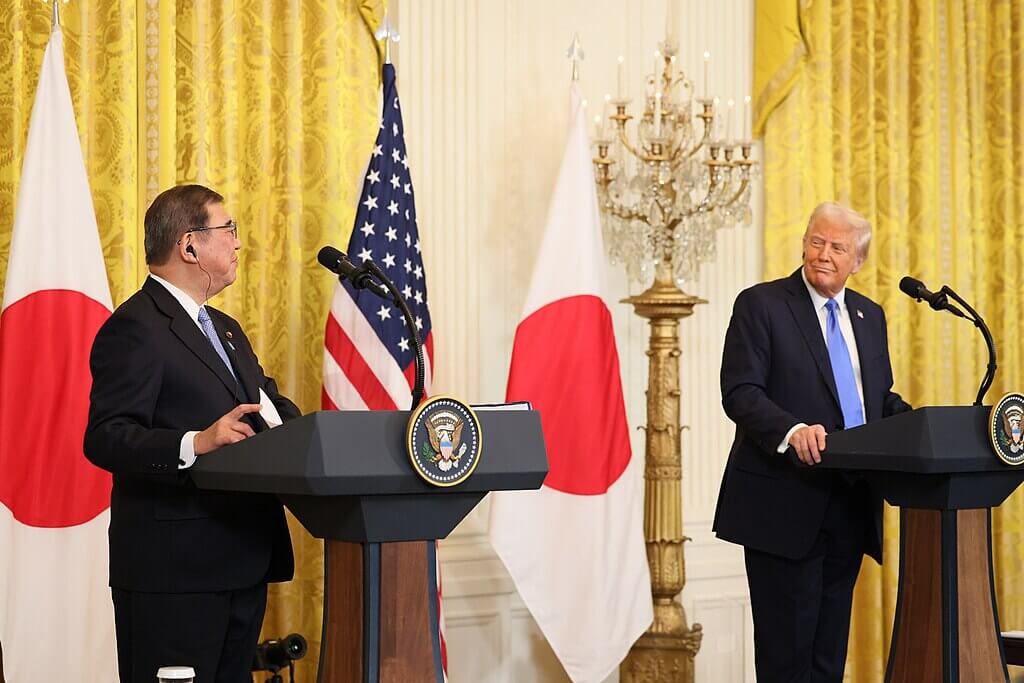President Donald Trump surprised Japan when he announced that he gave a green light to the “partnership” between U.S. Steel and Nippon Steel on May 23. When asked by the media on May 25, Trump emphasized that the transaction he had given a tentative green light to was a “partnership” that would include heavy investment by Nippon Steel in U.S. Steel and therefore contribute to revitalizing the U.S. steel industry.
Politicized From the Start
The proposed acquisition of U.S. Steel by Nippon Steel—the world’s fourth-largest and Japan’s largest steel producer—has been heavily politicized over the last few years. The two companies announced the proposed acquisition on December 18, 2023, with Nippon Steel would acquire U.S. Steel via a cash transaction at $55 per share. Their transaction has been under a microscope ever since.
The biggest factor was the timing. By December 2023, the presidential politics were already in full swing. A proposed acquisition of a major U.S. corporation by its foreign competitor is a politically sensitive issue at any given time. This is especially true during the presidential and congressional election seasons. The case of a proposed acquisition of U.S. Steel by Nippon Steel checked both of these boxes and more.
First, the transaction involved not just any industry, but steel—an industry which not only has long embodied the prowess of U.S. manufacturing but also has been considered one of the industries that are believed to have potential significance to U.S. national security. Any merger with foreign companies is complicated because it not only needs to make business sense, but also needs to be perceived as politically acceptable for both parties. The latter becomes even more important in an industry that has national significance.
More importantly in the case of a proposed acquisition of U.S. Steel, the focal point of the 2024 election cycle was the revival of the U.S. manufacturing industry and helping American middle class by creating more well-paying jobs in the U.S. When candidates are trying to garner support from these families many of whom are in the battleground states in the Midwest, the last thing a candidate wants to do is to appear supportive of the takeover of U.S. companies—particularly major manufacturing companies—by their foreign competitor that creates the perception that more jobs may move overseas. It certainly did not help Nippon Steel and U.S. Steel that the company was headquartered in Pittsburgh in Pennsylvania, one of the battleground states that often determines the result of the presidential election.
Finally, a lot of questions remain about how much effort Nippon Steel might have put into outreach to U.S. lawmakers whose district will enjoy the benefit of the proposed acquisition prior to their joint announcement with U.S. Steel. Nippon Steel’s initial level of engagement with U.S. labor unions remains unclear. The immediate reaction from both groups strongly suggests that Nippon Steel might not have put in much, if any, measurable effort to build relationships with these key stakeholders whose support would have been critical, especially in the election year, before their announcement.
Predictably, the announcement by the two companies was met by strong opposition from the U.S.. The case was too politically sensitive and divisive for the Committee on Foreign Investment in the United States (CFIUS) to reach a consensus, and without CFIUS’s unanimous decision to support the deal, Biden announced his decision to block the proposed deal through an executive order on January 3, 2025.
Trump’s Change of Heart, But Questions Remain
President Trump also initially indicated that he would not support the deal. In fact, within the week after being elected to be the next president, he indicated that he was “totally against” it, even going so far as to say “As President, I will block this deal from happening. Buyer, Beware!” declaring that he would reject the deal “instantly.” Nonetheless, just under six months into his administration, he touted the deal as the “blockbuster agreement that will ensure this storied American company stays an American company.”
President Trump’s change of heart seems to be driven by his desire for a tangible result demonstrating that his tough trade policy motivates companies—both foreign and domestic—to bring the manufacturing back to the U.S. Considerable efforts by some Republican lawmakers—convinced that their electorates would suffer from further decline of the U.S. steel industry—turned out to be pivotal, as they were able to present a convincing case that the benefits of allowing the deal to go through far outweighs the potential risks.
At a rally in Pittsburgh, Trump praised Nippon Steel’s “monumental” commitment, including the purchase of U.S. Steel’s outstanding shares at $14 billion, additional investments in the existing U.S. Steel facilities, the introduction of advanced technologies, and concluding a National Security Agreement with U.S. government as a safeguard ensuring a certain level of production capacity in the U.S. The corporate board—whose majority will be U.S. citizens—will be subject to the approval by the U.S. government, among other things.
Still, some critical questions are yet to be answered. For instance, the understanding of the term “partnership” remains unclear. Other critical elements, such as how much control Nippon Steel will ultimately have over the operation of U.S. Steel after the deal, remain vague, to say the least. Given that President Trump still needs to approve the final deal, the answers to these questions will be critical.
Can US Shipbuilding Follow the Same Model?
As difficult as the process has been, Nippon Steel’s experience offers a valuable lesson for Japan’s engagement with other industries in the U.S. that are considered potentially critical for national security. In fact, Tokyo does not need to look far. During his first high-profile overseas visit earlier in the spring, Secretary of the Navy John Phelan suggested that the US and Japan cooperate on dual-use ships. He also urged Japan to invest in U.S. shipyards. Indeed, there has been some speculation that Japan may want to pursue cooperation in shipbuilding as Japan tries to finalize its trade talks with the U.S. to mitigate the impacts of U.S. tariffs.
If Tokyo wants to leverage its support for U.S. shipbuilding in its trade negotiations with Washington, however, it needs to learn from how Trump responded to the U.S. Steel-Nippon Steel case.
First, Japan needs to understand that the U.S. is seeking investment in the U.S. Opening shipyards in Japan for maintenance, repair, and overhaul (MRO) for U.S. Navy ships will no doubt be in the interests of the U.S. Navy, particularly its 7th Fleet, because it will not doubt better support its desired operational tempo. It is an important cost-saving measure as well. However, it does not align well with the Trump administration’s goal of reviving the U.S. shipbuilding industry. Therefore, in order for Japan’s offer to be received well, it will need to include heavy investments in U.S. shipyards and personnel. In this context, identifying a specific U.S. shipyard to partner with a Japanese shipyard will be critical.
Congressional outreach is equally critical, if not more so. Without the buy-in from Congress, cooperation in the industries deemed critical for U.S. national security will be extremely difficult, if not impossible, because the issue will be destined to be politicized as the mid-term election draws close.
In this context, it is noteworthy that U.S. Steel and Nippon Steel’s leadership have been in lockstep to promote their business plan. They initially announced a proposed merger plan in December 2023. Since then, they have worked hard to combat the perception that the proposed transaction was a “buyout” of a U.S. company by its Japanese competitor. Throughout the process, they have stayed on message: their proposed arrangement is a “win-win” business transaction for both the U.S. and Japan, and the benefit of the deal not only to U.S. Steel’s workers but also to the global competitiveness of U.S. steel industry writ large is far greater than any potential risk.
But Tokyo faces its own challenges in creating a mutually-beneficial offer to support the U.S. shipbuilding industry, because Japan’s shipping industry has also been grappling with its own challenges. Some of these challenges, including declining demand and an aging workforce (especially skilled laborers), are not critical to the long-term health of the industry. In other words, despite the government’s aspirations, investing in a U.S. shipyard is a tall order for most shipbuilders in Japan.
On May 27, Japanese Prime Minister Ishiba expressed his government’s willingness to support the U.S. shipbuilding industry. He made a particular reference to potential cooperation on specialized ships, such as icebreakers for the U.S. to sustain its presence in the Arctic—an area where President Trump has been expressing keen interest. Whether such an offer can be leveraged in the ongoing trade talks, however, depends on whether Ishiba is ready to rally Japanese shipbuilders to follow in Nippon Steel’s footsteps.


AloJapan.com